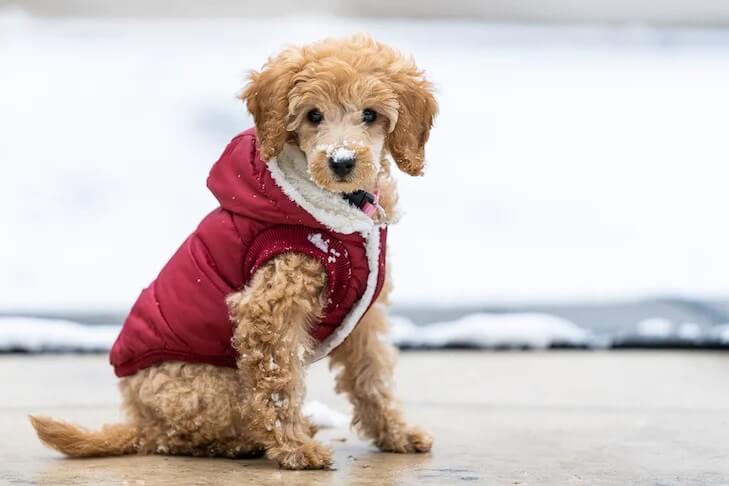
10 Cold Weather Tips for Your Dog
Winter can be a fun time for your pet enjoying the change in temperature and snow to run an play in. As a pet owner, it’s your job to know the risks, and just like heat, the cold can pose a real threat to your dog if not supervised properly. Here are ten tips to keep your dog safe during the cold winter months.

Bundle Your Dog Up
Even though your dog as a built-in coat, it may not be enough. If it’s cold out, consider adding a layer to your dog before going out, this is especially important for short-haired dogs (large and small) or smaller, delicate dogs.
Protect Your Dog’s Paws
Ice and snowy conditions can injure your dog’s bare paws. Snow will initially melt when it comes in contact with your dogs paws, but as they continue to run or play in the cold this moisture builds and then freezes and can do real damage to your dog’s paws. If you are planning to be out in the cold long, consider paw protectors for your pup’s feet safe.

Trim Foot Fuzz
The Hair on the feet of long-haired dogs can form ice balls between pads and toes. Keep them trimmed, cutting the hair so that it is even with the surface of the foot. This will help to prevent the ice balls and keep your pup out of pain.
Clean Your Dog’s Paws
If you live in the city you likely know that the streets are coated with deicing substances, such as sodium chloride (rock salt) and calcium chloride. These substances make it safer for us to walk but can damage the pads on your puppy’s paws. If you find yourself walking through this stuff make sure you wash off your dog’s feet as soon as you return home. Use warm water and make sure to reach spots between the toes and pads.
Limit Outside Time
Just like humans, dogs can suffer from frostbite, especially on delicate earflaps and tail tips. In extreme cold, it’s best to keep dogs inside as much as possible, with the exception of the heavy-coated northern breeds that thrive in low temperatures. If it’s not possible to keep the dogs indoors, be aware of the major signs of frostbite, which include skin that appears white or blue.

Avoid Ice
It might look fun to cross that icy pond but too often we hear stories of dogs that had to be rescued (or didn’t get rescued) from icy waters. Ice can easily crack under the weight of your dog and he is likely not looking out for thin ice, so you need to. Slipping on ice can also lead to muscle strains and other injuries, so it’s best to avoid it altogether.
Consider Your Dog’s Age
Here our canine friends again share human characteristics. In this case, very young and very old dogs have a hard time regulating body temperature, so they have more extreme reactions to changes in the weather. Playtime in the snow may be too much for them. It’s a good idea to keep both older and young dogs indoors as much as possible on a cold or snowy day.

Collar and Chip
Many pets become lost in winter because snow and ice can hide recognizable scents that might normally help your pet find his/her way back home. Make sure your pet has a well-fitting collar with up-to-date identification and contact information. A microchip is a more permanent means of identification, but it's critical that you keep the registration up to date.
Prevent Poisoning
Clean up any antifreeze spills quickly, as even small amounts of antifreeze can be deadly. Make sure your pets don't have access to medication bottles, household chemicals, potentially toxic foods such as onions, xylitol (a sugar substitute) and chocolate.
Recognize Warning Signs
If your pet is whining, shivering, seems anxious, slows down, seems weak, or starts looking for warm places to burrow, get them back inside quickly because they are showing signs of hypothermia. Frostbite is harder to detect, and may not be fully recognized until a few days after the damage is done. If you suspect your pet has hypothermia or frostbite, consult your veterinarian immediately.

- Dec 10, 2019
- in Pet Blog






















































